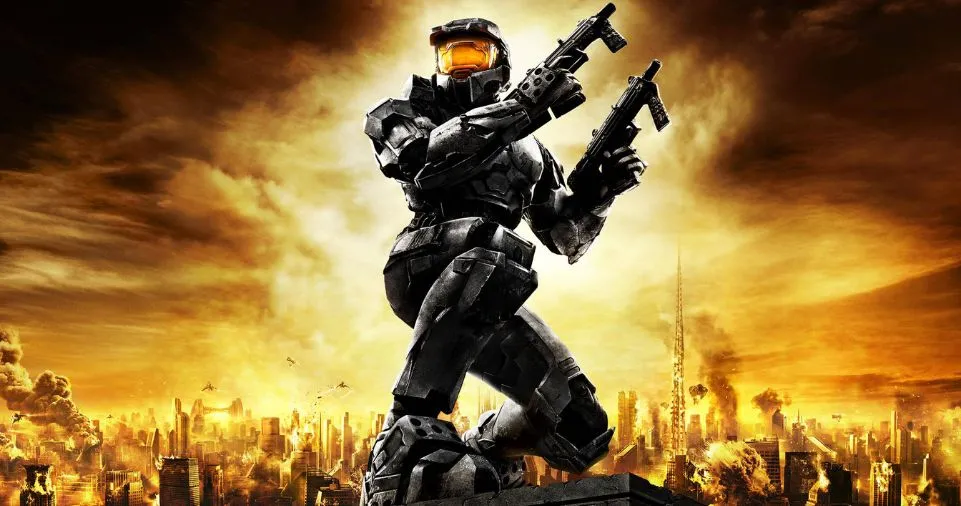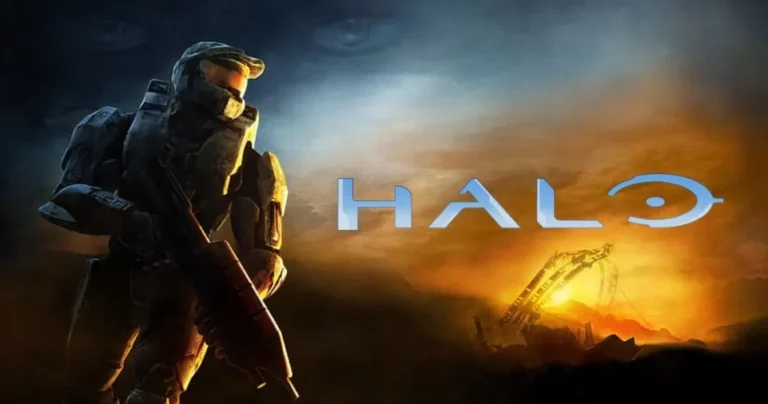The year 2003 was a landmark moment in gaming history with the release of Halo: Combat Evolved for PC.
Initially launched in 2001 for the Xbox, Halo quickly ascended to cultural icon status, redefining the first-person shooter genre with its compelling narrative, innovative gameplay mechanics, and immersive multiplayer experience.
As the game transitioned to PC, it not only brought the core game but also introduced visual elements that have left an indelible mark on the gaming community.
Central to this are the game icons and banners that embody the essence of the Halo universe.
This article explores the captivating world of Halo (2003) Game icons and banners, delving into their design, significance, and lasting impact on the gaming landscape.
The Design Philosophy Behind Halo (2003) Game Icons
The visual design of Halo (2003) game icons and banners reflects the meticulous attention to detail that Bungie, the game’s developer, invested in every aspect of the game.
These icons are not just functional elements but are crafted to deepen the player’s immersion in the Halo universe.
Simplicity and Functionality
A hallmark of Halo’s game icons is their simplicity and functionality. Designed to be instantly recognizable, these icons use clean lines and bold shapes to convey their purpose.
Whether it’s the iconic shield representing player health, the unmistakable silhouette of a Warthog vehicle, or various weapon icons, each graphic is crafted for quick identification, even in the heat of battle.
This design choice enhances gameplay and contributes to a cohesive visual language that defines the Halo experience.
Symbolism and Storytelling
Beyond their functionality, Halo’s icons carry profound symbolism that ties into the game’s rich lore.
For instance, the UNSC (United Nations Space Command) emblem, featuring an eagle clutching a globe, symbolizes humanity’s military strength and global unity against the alien Covenant threat.
Similarly, the Covenant symbols and icons, with their distinct alien geometric patterns, immediately signal the otherworldly nature of these antagonists. These visual cues enrich the storytelling, subtly connecting players to the game’s narrative.
The Evolution of Halo Banners
Banners in Halo (2003) serve multiple purposes, from enhancing the visual appeal of menus and loading screens to representing clans and player profiles in multiplayer modes.
The evolution of these banners mirrors both technological advancements and shifts in artistic direction.
Early Days: Basic Yet Iconic
In Halo’s early days, banners were relatively simple, often featuring key art from the game’s promotional materials.
These early banners typically showcased Master Chief, the game’s protagonist, in various heroic poses against dramatic backdrops of alien landscapes or war-torn battlefields.
The use of bold colors and dynamic compositions helped establish the game’s epic tone, drawing players into the expansive Halo universe.
Customization and Personalization
As the series progressed, players gained the ability to customize their in-game profiles with unique banners. This shift allowed players to express their individuality and fostered a vibrant community culture.
Players could choose from various designs, ranging from military insignias to abstract art, reflecting their tastes and affiliations within the Halo community.
The opportunity to unlock new banners through gameplay achievements further incentivized engagement and showcased player dedication.
Impact on the Gaming Community

The impact of Halo’s (2003) game icons and banners extends beyond their in-game utility.
These visual elements have become cultural touchstones for gamers, influencing fan art, merchandise, and even the design of other games.
Community Engagement and Creativity
Halo’s iconic imagery has inspired a wealth of fan-created content, from digital artwork to cosplay. The easily recognizable symbols and characters provide a rich canvas for creative expression.
Online forums and social media platforms abound with fan art depicting everything from reimagined game icons to elaborate custom banners. This creativity keeps the Halo community engaged and perpetuates the game’s legacy.
Merchandising and Branding
Halo’s distinct visual style has been prominently featured in merchandise, from T-shirts to posters and memorabilia.
This not only serves as a source of revenue but also reinforces brand loyalty. Fans proudly display these items, signaling their affiliation with the Halo franchise and its community.
The Legacy of Halo (2003) Game Icons and Banners
Looking back at Halo (2003) and its enduring influence, it’s evident that the game’s icons and banners are more than just visual elements. They are a testament to the game’s cultural impact and a celebration of its artistic achievements.
Influencing Future Game Design
Halo’s success in visual design has influenced countless other games.
Developers have drawn inspiration from Halo’s approach to iconography and banner design, recognizing the importance of creating a cohesive, immersive visual language.
This influence is evident in the design of user interfaces, player emblems, and customization options in many modern games.
Preserving a Cultural Phenomenon
Efforts to preserve and celebrate Halo’s legacy continue. Remastered editions of the game ensure that new generations of players can experience Halo with updated visuals that honor the original design philosophy.
Additionally, fan-driven initiatives, such as community archives and digital museums, strive to keep the history of Halo’s visual elements alive for future enthusiasts.
ALSO READ:
Conclusion
The captivating Halo (2003) game icons and banners are a powerful example of the importance of visual design in video games.
From their functional simplicity to their deep symbolic meaning, these elements are integral to defining the Halo experience.
They not only enhance gameplay but also contribute to the rich tapestry of the game’s lore and community culture.
As we celebrate Halo’s legacy, it’s clear that its game icons and banners will continue to inspire and captivate gamers for years to come.

